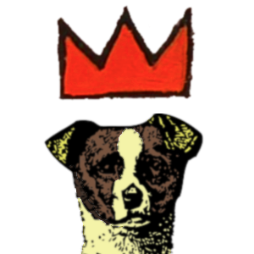Don't understand
-
 by
j.t.searcy
by
j.t.searcy
Re.: Subject Summary (35166) 1993 QD8: To my memory, this is the 2nd time I have opened an image and found in green "Guess what! You're the first to see this set of images." My heart fluttered, I was the first to see this image...how cool! To add extra thrill...an asteroid was found in both. Unfortunately it is also the second remembered emotional ride only to crash because upon selecting Finish, a statement announcing this was a previously known asteroid is displayed. How can this be the first image anyone other than this humble asteroid hunter has seen, yet the asteroid is known to exist?
Jerry SearcyPosted
-
 by
dudrea
by
dudrea
I had the same question, and after reflexion I believe understand an explanation.
By essence asteroid ...Move 😉 Even if we are the first to look at a particular place, it's full possible that a known asteroid entered it. And the asteroid is known ! Then it's of course possible to know where it would be in the future
Posted
-
 by
a349
by
a349
The images that we are getting are from the Catalina Sky Survey.
They scan all their images using automatic software routines, and discovered already all the "easy" to find objects.
They also have in their software package information about the known 600000 asteroids and NEOs.
The calculate for each image, which object should be in this stellar field. They also plot the green circles.
We are doing the second, third or even fourth scanning manmually, looking for the faint objects that wer not
detected before. Therefore, the low quality frames are of not much use, except to ruin our eyes.Posted
-
 by
djsato
admin
in response to dudrea's comment.
by
djsato
admin
in response to dudrea's comment.
dudrea is right. Known asteroids (circled in green) are most likely located by calculating their orbits from previous sightings.
Posted
-
 by
Dr.Asteroid
scientist, admin
by
Dr.Asteroid
scientist, admin
To clarify djasto's comment - yes. The positions of the asteroids are calculated by the Minor Planet Center as a service for everyone. We got the Minor Planet Center to run every known asteroid back in time for the days and sky positions that we have here. Some of them were excluded because they're known - but not well enough to tell where it is. For example, if something was seen on one night in 2001, it won't be included because the orbit is too poorly known.
Asteroids with a low number (and 35166 counts as a low number these days) will have orbits that we can predict for hundreds of years. One of the major goals of the asteroidzoo is to add sightings to hundreds of asteroids that were only seen once - and turn a bunch of not-very-well known orbits into the ones that we can predict with high accuracy.
Posted
-
 by
Cpt._Pete
by
Cpt._Pete
Or even simpler for people like me:
They took a picture of the asteroid , not found the asteroid in the picture.
That
s why its already known(Now I read that ,it seemed simpler in my head lol )
Posted